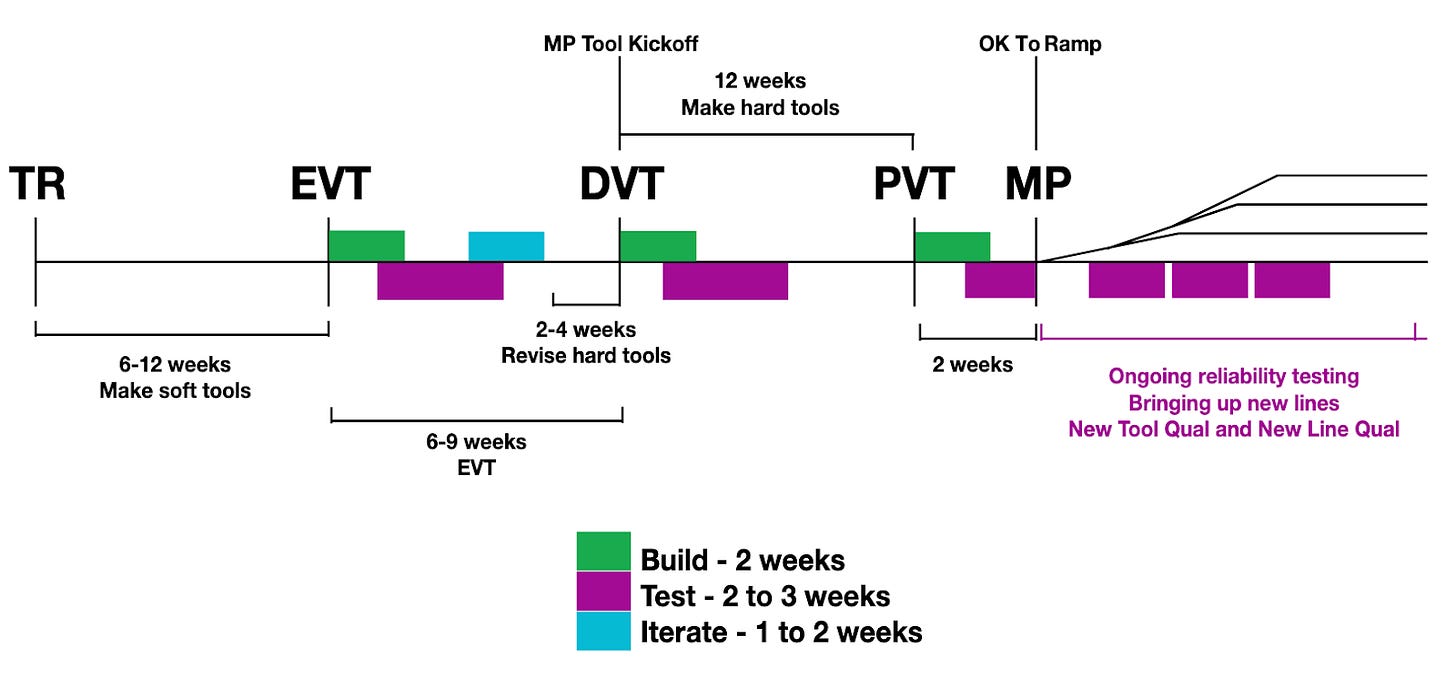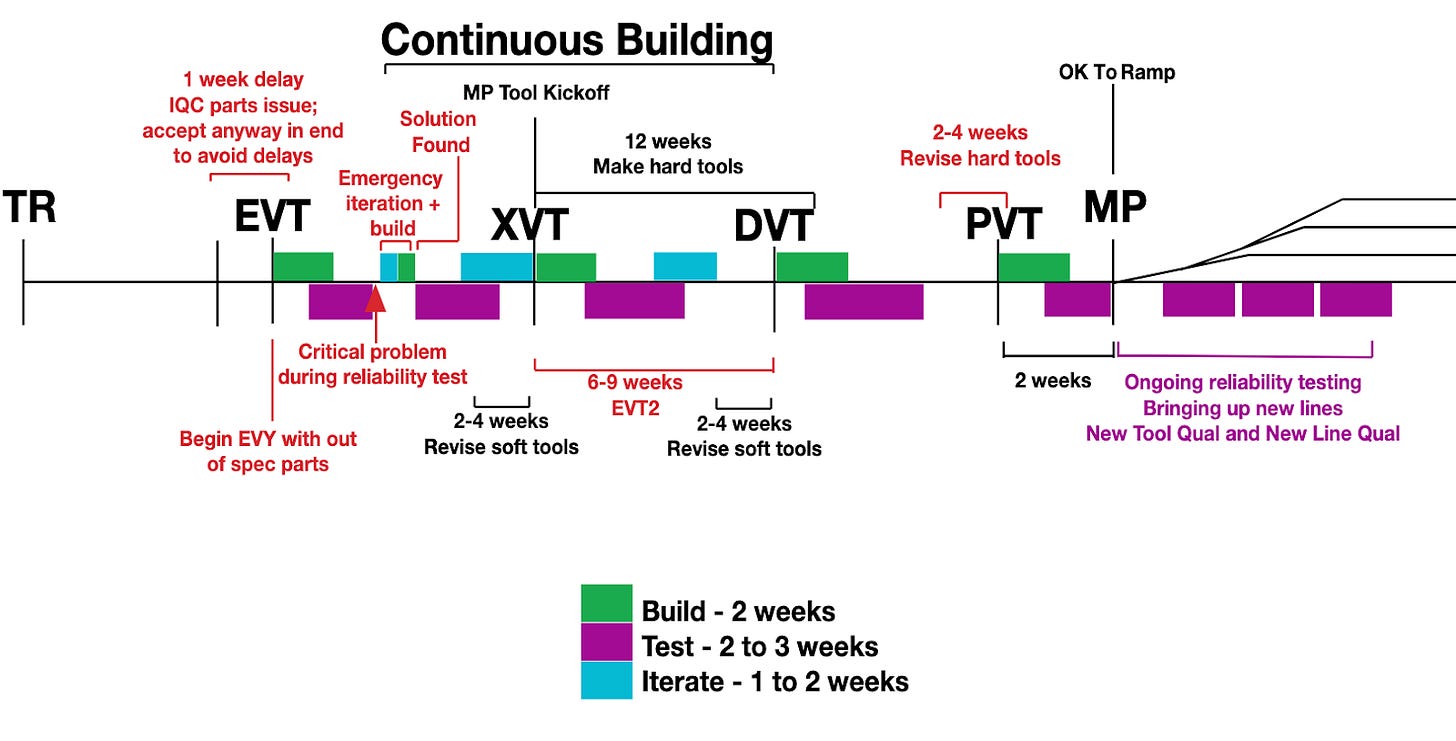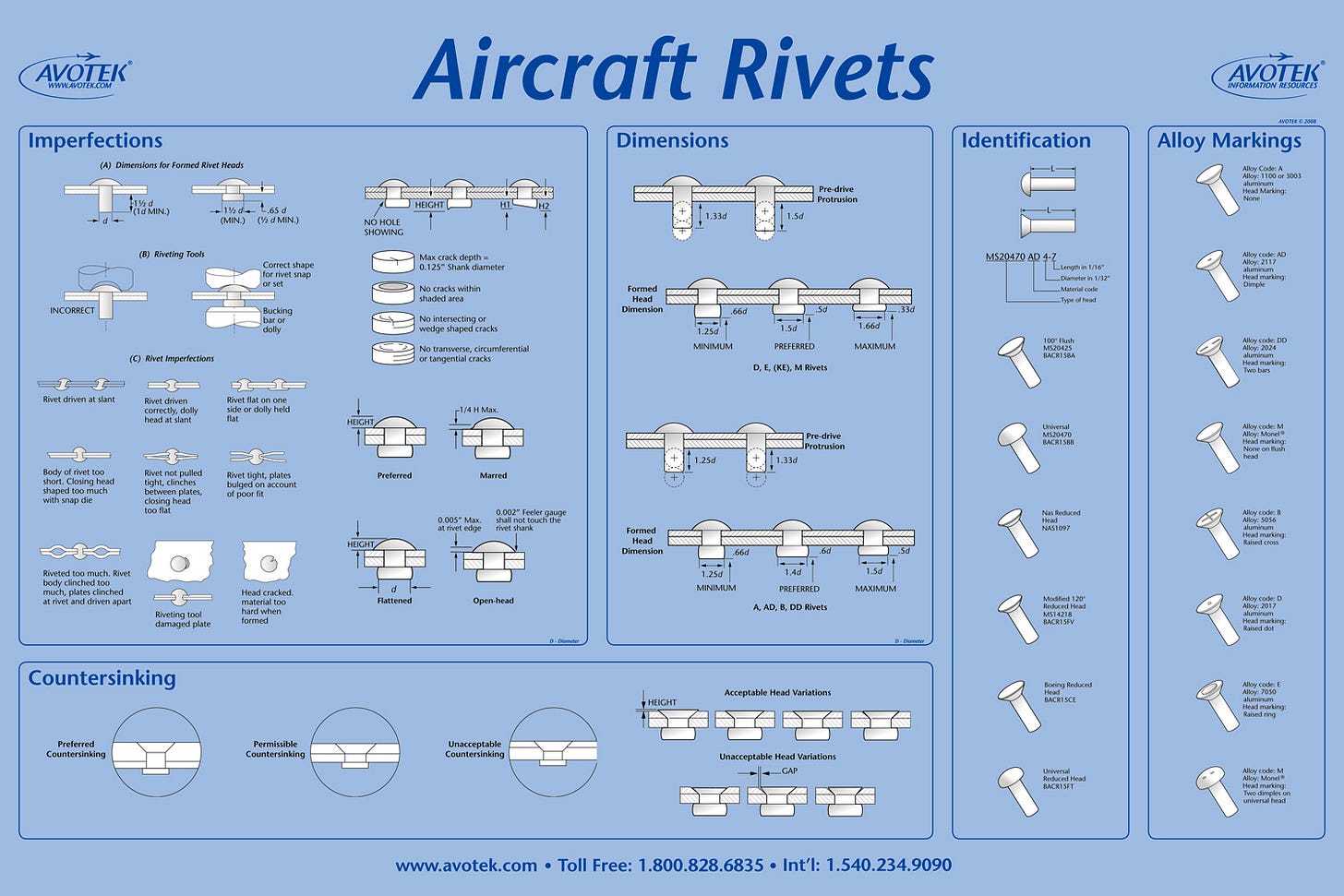👋 Happy Saturday! This week’s highlights include an interview with a bootstrapped startup on launching hardware without venture capital, lecture notes on the realities of engineering builds, and a chart on rivet assembly in aircraft fastening.
It was great meeting so many of our readers at our SF event this week — thanks for coming out and spending the evening with us!
Interesting Video: Launching Hardware Products Without VC Money in 2025
In honor of the long weekend, highly recommend watching this interview with Nanu, a small bootstrapped hardware startup building analog-centric devices. The founders are behind the Arc alarm clock and Nudge counter, and it’s one of the most realistic accounts of product development in practice.
A couple interesting points stood out from the interview (though you should watch the whole thing):
Small Business Administration (SBA) loans are a government-backed form of debt financing and a viable alternative for raising capital. Unlike traditional venture capital, which requires selling equity and diluting ownership, SBA guarantees enable banks to extend long-term debt based on demonstrated revenue and cash flow. For Nanu, that meant a 10-year loan at ~10.5% to finance tooling and inventory — expensive, but non-dilutive.
Crowdfunding still works (for less complex products). There are two schools of thought: raise venture capital to reach escape velocity, but take on investor math that assumes outsized returns (early-stage investors usually expect ~10×+ returns) and pushes companies toward compressed timelines and hypergrowth. Alternatively, bootstrap through Kickstarter campaigns and incremental revenue, trading speed for slower but more controlled growth.
Nanu’s development strategy is reminiscent of Fellow’s early days. Fellow began as a bootstrapped hardware startup out of Stanford in 2013, launching design-forward coffee gear on Kickstarter before turning to joint development manufacturing (JDM) partners in China for production. They relied on crowdfunding and organic growth for close to a decade; venture capital came later ($10M in Series A and $30M in Series B by 2022) which enabled the shift from single products to a full coffee ecosystem.
P.S. It’s also worth checking out more of Leon’s videos. One of the most interesting new YouTubers with thoughtful conversations.
Interesting Lecture Notes: A Guide to Engineering Builds
Instrumental’s guide to engineering builds is a golden reference on how hardware programs actually progress through development stages and into mass production. The specifics are consumer electronics focused, but the cadence rhymes across most engineering development cycles.
For context, the usual acronyms are EVT (Engineering Validation Test), the first functional builds to prove the design works; DVT (Design Validation Test), near-final builds focused on reliability, compliance, and manufacturability; and PVT (Production Validation Test), a pilot run at the factory to confirm yield at volume. The true exit criteria for mass production are that factory lines consistently hit target yield, tooling and processes are stable, and the product is ready to ramp.
Interesting Chart: Rivets in Aircraft Fastening
Rivets are the dominant fastener in airframes because they’re easier to inspect, repeatable in installation, and far better suited to thin aluminum structures than welds or adhesives. This chart highlights common assembly defects, typical rivet dimensions, and the main types used in aircraft construction.
Manufacturing & Startup News
More leftovers from our weekly research:
Garage raised $13.5M in Series A funding to expand its digital marketplace for essential equipment like emergency vehicles, industrial machinery, and more. The platform streamlines procurement by bundling financing and logistics (freight, delivery, etc.) into a single transaction.
FieldAI has raised $405M across multiple undisclosed rounds to build ‘foundational embodied AI models.’ These are physics-informed control systems designed to generalize across robots like humanoids, quadrupeds, and autonomous vehicles.
Aerospacelab raised $109.3M in Series B funding to scale manufacturing and build Europe’s largest satellite Megafactory. The company aims to produce 500 satellites annually by 2026 while pushing for deeper vertical integration of their subsystems.
Metro Weather, a Japan-based startup, raised $5.7M in a pre-Series B round to advance its Doppler LiDAR systems which use infrared lasers to measure wind conditions in real time. The funding will support continued development and commercialization across both defense and civilian sectors.
Loft Dynamics raised $24M in Series B funding to scale production of its EASA-qualified VR simulators for helicopters and eVTOLs. The systems provide lower-cost training that reduces operating expenses and improves pilot readiness.
Access Every Link We’ve Ever Shared 🎞️
Refer three friends to Hardware FYI and unlock our full archive.
Missed an issue? Hunting for that one link? Every tool, guide, and article we’ve ever shared is in here.
Thanks for reading to the end - if you’ve enjoyed the mechanics of these insights, consider sharing this issue with a fellow enthusiast!






Great article! Small note from a former aerospace production engineer, rivets also demonstrate high fatigue life and don't require "safetying." Overall minimizing necessary weight and ensuring a quality damage tolerance rating.
Thanks for the article! Small business loans are a great idea, especially if you can use them to get your first product into customers' hands.
Dyson is still the ultimate for me when it comes to bootstrapping hardware, remortgaging his house and taking on close to a million bucks in debt . . I am not sure who was braver Dyson or his bank manager.